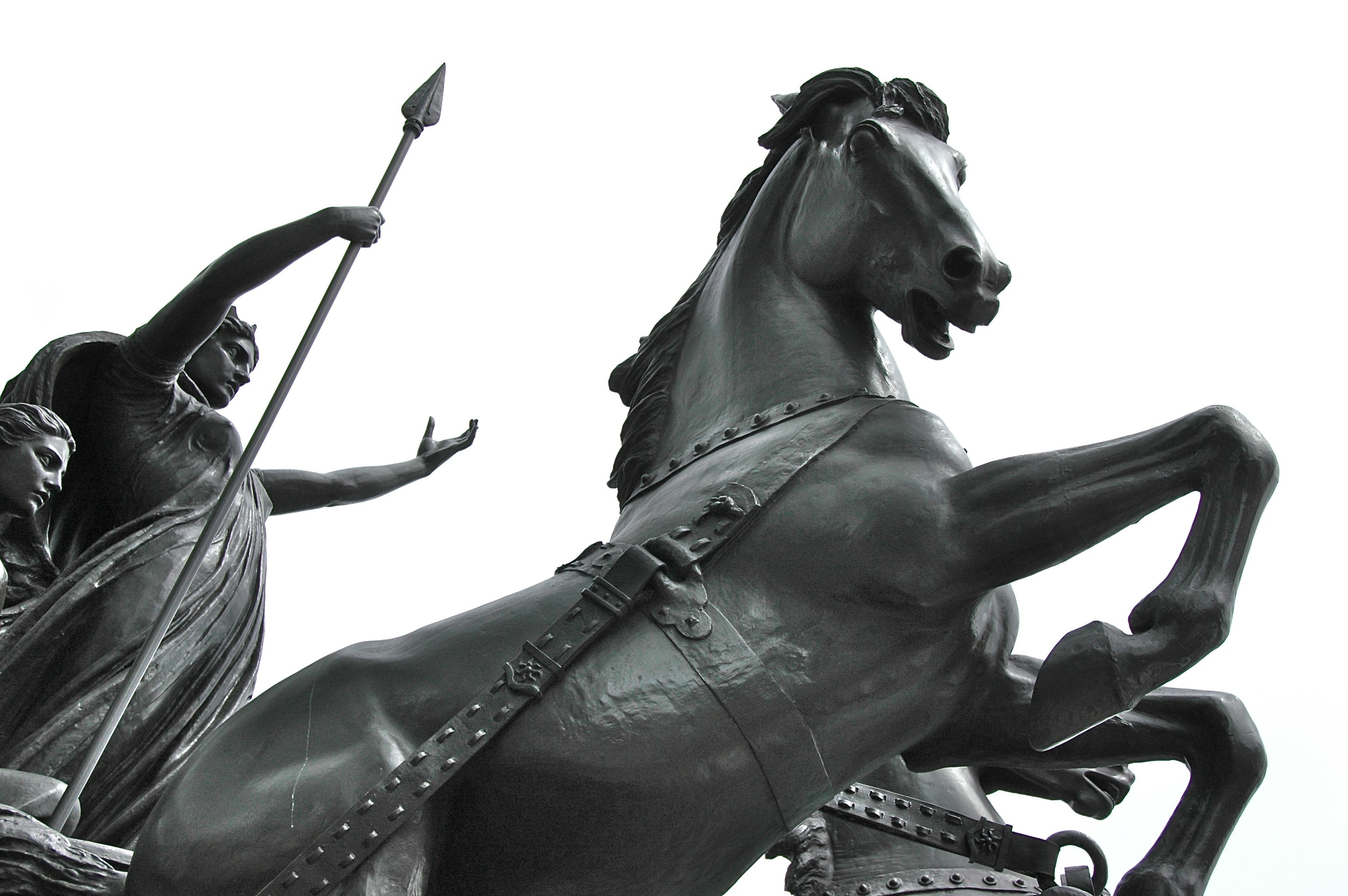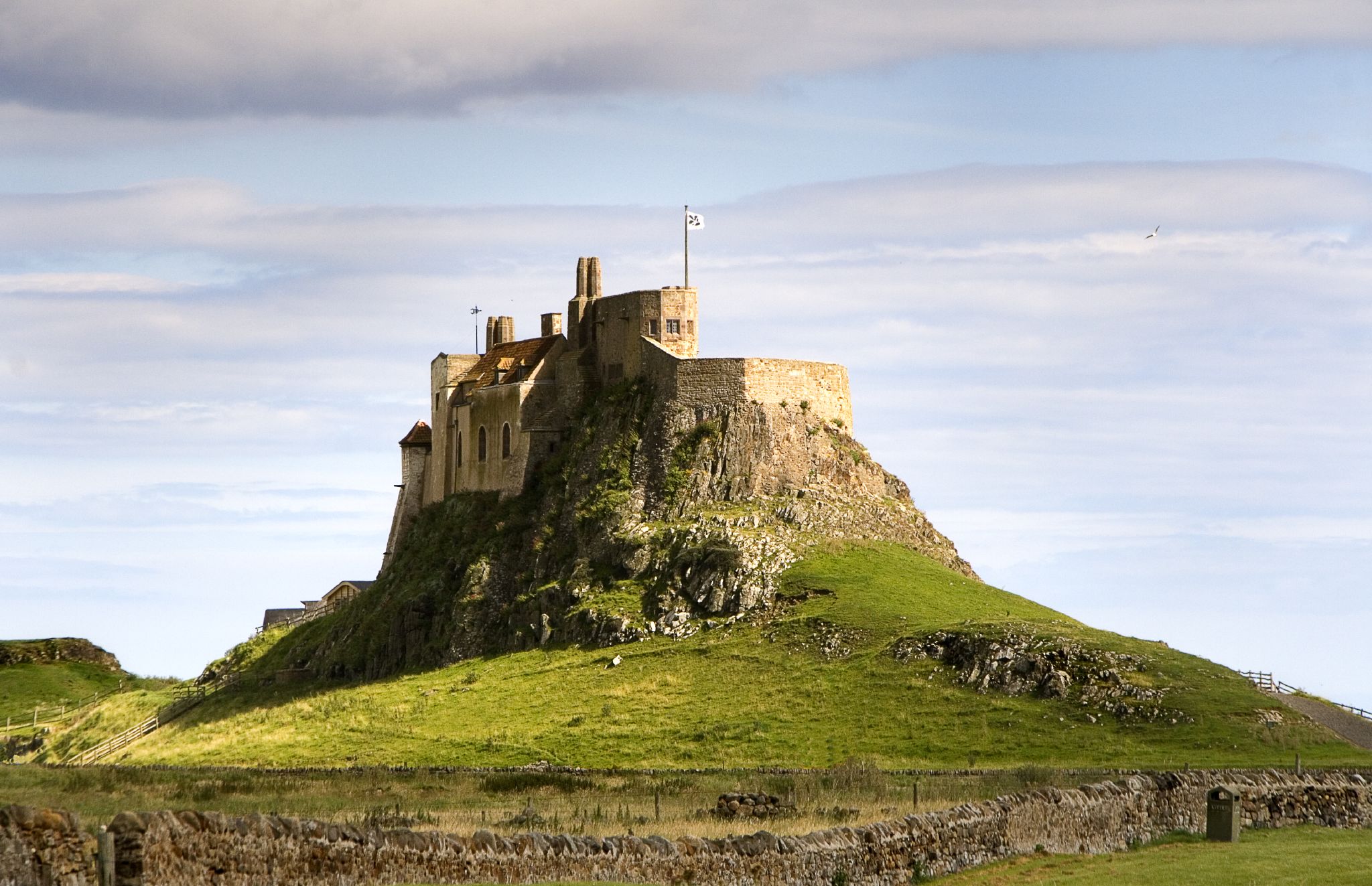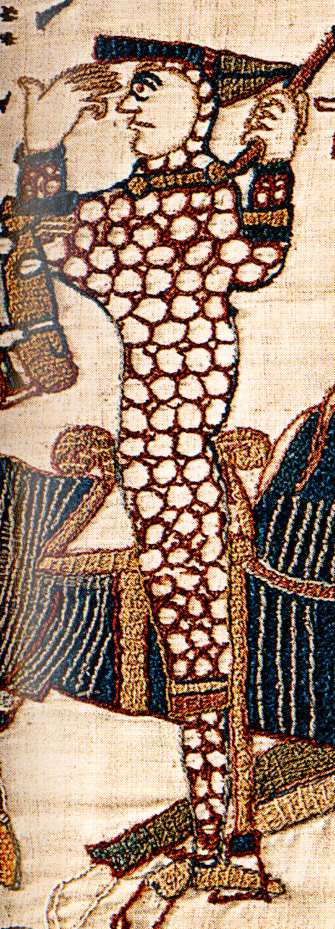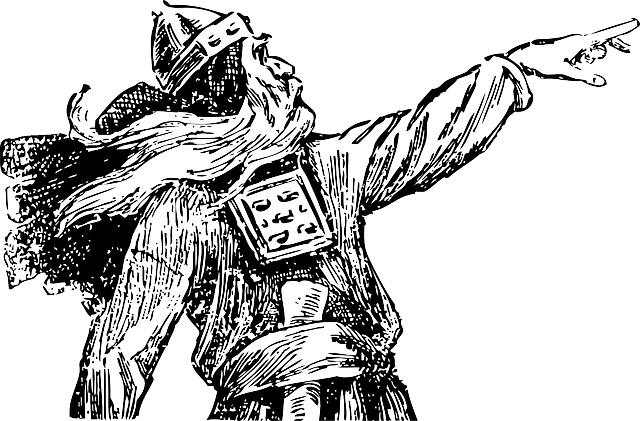Objectives
To learn about:
- The Roman Empire and its impact on Britain
- Britain’s settlement by Anglo-Saxons
- The Viking and Anglo-Saxon struggle for the Kingdom of England to the time of Edward the Confessor
Welcome to Invaders and Settlers Day
This is an introduction to the topic of Invaders and Settlers to Britain. For over 1000 years Britain was invaded by other Europeans. Each group that came settled and brought with it a culture that became a part of what Britain is today.
Today you are going to create a large timeline by completing activities and adding some of them to a long line (which will be on the wall).
The time line will start before 54BC and end at AD1066.
BC and AD.
BC is short for Before Christ meaning before the birth of Jesus. An alternative modern term is BCE meaning ‘before modern era‘. It refers to the time before 0 in the Julian and Gregorian calendars (the ones most countries use today).
The term Anno Domini is Medieval Latin and means “in the year of the Lord“. It refers to the time after 0 in the Julian and Gregorian calendars.

Because BC is the English abbreviation for Before Christ, it is sometimes incorrectly concluded that AD means After Death, i.e., after the death of Jesus. However, as Jesus didn’t die until he was 33 years old this would mean that the 33 years associated with the life of Jesus would neither be included in the BC nor the AD time scales.

Session One – Prehistoric Britain.

Who was in Britain before the Romans?
Several species of humans have intermittently occupied Britain for almost a million years.
The earliest evidence of human occupation is around 900,000 years ago with stone tools and footprints probably made by Homo antecessor.
Until this time Britain was permanently connected to the Continent by a chalk ridge between south-east England and northern France.
Around 425,000 years ago a megaflood broke through the ridge, creating the English Channel, and after that Britain became an island.
Britain was unoccupied by humans between 180,000 and 60,000 years ago, when Neanderthals returned.
Since 11,700 years ago Britain has been continuously occupied.
Britain was a mysterious, dangerous and exotic land. In the popular Roman imagination, it was a place of marsh and forest, mist and drizzle, inhabited by ferocious blue-painted warriors. It was a fine testing-ground of an emperor’s fitness to rule.
The Roman conquest of Britain in AD43 is conventionally regarded as the end of Prehistoric Britain and the start of recorded history in the island, although some historical information is available from before then.
Activity 1.1 – Build a stone circle.
The famous ancient stone circle at Stonehenge was built around 2500BC. But there are many more all across Britain.
Build a stone circle. You can use salt dough, modeling clay, stones, or lego. Don’t forget to photograph it.
Activity 1.2 – Timeline.
Add a picture of stonehenge or/and your own stone circle to the start of your wall timeline.
Session Two – The Romans
Who were the Romans?
Ancient Rome was a Roman civilization from the founding of the Italian city of Rome in the 8th century BC to the collapse of the Western Roman Empire in the 5th century AD. The civilization began in the Italian Peninsula in 753 BC and grew into the city of Rome. The Roman empire expanded to become one of the largest empires in the ancient world. The Roman Empire was ruled from the city of Rome which had an estimated 50 to 90 million inhabitants (roughly 20% of the world’s population).
Here are two videos. You can watch one or both. It’s up to you.

Julius Caesar’s invasions (55 and 54 BC).
Gaius Julius Caesar was a Roman politician and military general.
In late summer, 55 BC, even though it was late in the campaigning season, Caesar decided to make an expedition to Britain. He was unable to find out any useful information about the inhabitants of the island but still he gathered together a fleet consisting of eighty transport ships and an unknown number of warships.
Caesar initially tried to land at Dover but when he came in sight of shore, the massed forces of the Britons gathered on the overlooking hills and cliffs dissuaded him from landing there, since the cliffs were so close to the shore that javelins could be thrown down from them onto anyone landing there.
He moved his fleet along the coast to find a different landing place but the British tracked him and the landing was opposed. To make matters worse, the loaded Roman ships were too low in the water to go close inshore and the troops had to disembark in deep water, all the while attacked by the enemy from the shallows.
However, the British were eventually driven back with catapultae and slings fired from the warships and the Romans managed to land and drive them off.
Note: Julius Caesar wasn’t the only Roman emperor to invade Britain. The Roman conquest of Britain was a gradual process. In AD 43, under Emperor Claudius, the Romans forced their way inland through several battles against Celtic tribes.
Activity 2.1 – Make a catapult.
The Romans used giant catapults (catapultae) to defeat the Britons.
Choose one of these methods to make a catapult. Don’t forget to photograph and video it.
Activity 2.2 – Timeline.
Add a picture of Julius Caesar or/and your catapult to your wall timeline.
Session Three – The Celts

Boudica’s revolt (AD60 ).
Boudica (Boudicca, Boadicea, Boudicea, Buddug) was a queen of the British Celtic Iceni tribe who led an uprising against the occupying forces of the Roman Empire in AD 60.
Boudica’s husband, Prasutagus, was the ruler of a British Celtic tribe called the Iceni, who inhabited roughly what is now Norfolk,. In his will (the papers that explained what would happened to everything he owned if he died) he left his kingdom jointly to his daughters and to the Roman empire. However, when he did die, his will was ignored, and the kingdom and his property were taken by Rome. Boudica and her daughters were beaten and tortured badly.
Boudica however, led a very large army to defeat the invading Romans and they burned and destroyed Londinium and Verulamium, two major Roman settlements.
An estimated 70,000–80,000 Romans and British were killed by Boudica’s army. While Boudica and her army ultimately lost, they did cause Emperor Claudius to withdraw many of his legions from Briton.
Because the uprising failed she supposedly poisoned herself.
In Britain today Boudica is considered a British folk hero.
Activity 3.1 – The Story of Boudica.
Create a story strip of Boudica’s uprising against the Romans using the poem to guide you.
Activity 3.2 – Timeline.
Add a picture of Boudica to your wall timeline.
Hadrian’s Wall (AD121 ).

Hadrian’s Wall, also called the Roman Wall or Picts’ Wall was a defensive wall in the Roman province of Britannia.
Hadrian’s Wall on Google My Maps (use Chrome)
It ran from the banks of the River Tyne to the Solway Firth and was the northern limit of the Roman Empire. Immediately north of the wall were the lands of the northern Ancient Britons, including the Picts.
It had a stone base and a stone wall. There were milecastles with two turrets in between. There was a fort about every five Roman miles, staffed with Roman soldiers.
A significant portion of the wall still stands and can be followed on foot along the adjoining Hadrian’s Wall Path. It is the largest Roman archaeological feature anywhere. It runs a total of 73 miles (117.5 kilometres) in northern England.
It is a common mistake to think that Hadrian’s Wall marks the boundary between England and Scotland. In fact Hadrian’s Wall lies entirely within England.
Activity 3.3 – Virtual tour of Hadrian’s Wall
Take a virtual Tour. (not mobile friendly – use Chrome)
Activity 3.4 – Timeline.
Add a picture of a landmark from Hadrian’s Wall to your wall timeline.
The Romans leave (AD410).
The end of Roman rule in Britain was the transition from Roman Britain to post-Roman Britain. Roman rule ended in different parts of Britain at different times, and under different circumstances.
Session Four – The Middle Ages (Medieval Britain)
Who was King Arthur (AD500)?
King Arthur was a legendary British leader who led the defence of Britain against Saxon invaders in the late 5th and early 6th centuries. The details of Arthur’s story are mainly composed of folklore and his actual historical existence is disputed by modern historians.
Arthur is a central figure in many British legends. The legendary Arthur developed as a character of worldwide interest through many tales and poems.
Arthur appears either as a great warrior defending Britain from human and supernatural enemies or as a magical figure of folklore.
Activity 4.1 – Timeline.
Add a picture of King Arthur or something connected to him to your wall timeline.
Who were the Anglo-Saxons?
The Anglo-saxons were a cultural group who inhabited Great Britain from the 5th century, and the direct ancestors of the majority of the modern British people. They were Germanic, coming generally, but not exclusively, from the area now known as Germany.
The Anglo-Saxon settlement of Britain describes the process which changed the language and culture of most of what became England. It changed from from Romano-British to Germanic. The Germanic-speakers in Britain developed a common cultural identity as Anglo-Saxons. This process followed the end of Roman rule in Britain around the year 410. The settlement was followed by the establishment of Anglo-Saxon kingdoms in the south and east of Britain, later followed by the rest of modern England.
The Seven Kingdoms.

When the anglo-saxons settled England in the 5th century they created seven main kingdoms (and many minor kingdoms). The country remained as these kingdoms until in was unified to become the country of England in the 10th Century.
The main kingdoms in Anglo-Saxon England were:
- East Anglia
- Mercia
- Northumbria
- Wessex
- Essex
- Kent
- Sussex
Mercia was generally known as the most important Kingdom in Anglo-Saxon England and occupies the area now known as the West Midlands and the city of Birmingham.
Activity 4.2 – Label the kingdoms.
Draw out and label the kingdoms on this map of England.
Augustine is sent by the Pope to convert Anglo- Saxons to Christianity (AD597 ).

The Anglo-Saxons were pagans. Paganism was a polytheistic (many gods) belief system, focused around a belief in deities known as the ése.
The most well known Anglo-Saxon deity was probably Woden. There was also a belief in other supernatural beings which inhabited the landscape, including elves and dragons.
Augustine of Canterbury was a Benedictine monk who became the first Archbishop of Canterbury in the year 597. He is considered the founder of the English Church.
The Pope in Rome sent Augustine to Britain to convert the Pagan Anglo-Saxons to Christianity.
Session Five – The Vikings
During the reign of King Beorhtric of Wessex (786–802) three ships of “Northmen” landed in Dorset. The local leader mistook the Vikings for merchants and directed them to the nearby royal estate, but the visitors killed him and his men.

Vikings destroy the monastery at Lindisfarne (AD793).
The earliest recorded planned Viking raid, on 6 January 793, targeted the monastery on the island of Lindisfarne, off the north-east coast of Northumbria.
The raiders killed the resident monks or threw them into the sea to drown or carried them away as slaves along with some of the church treasures.
In 875, after enduring eight decades of repeated Viking raids, the monks fled Lindisfarne.
Activity 5.1 – Make a Viking helmet (optional).
Use these instructions to make your own Viking helm.
Activity 5.2 – Timeline.
Add a picture of a Viking or/and a picture of your helmet to your wall timeline.
Session Six – England

King Alfred rules Wessex (AD871-899).
Alfred the Great was King of Wessex. His father died when he was young and three of Alfred’s brothers reigned in turn. Alfred took the throne after the death of his brother and spent several years dealing with Viking invasions.
He won an important victory in the Battle of Edington in 878 and made an agreement with the Vikings, creating what was known as Danelaw (see Session 5) in the North of England.
Alfred also helped convert the Viking leader Guthrum to Christianity.
He successfully defended his kingdom against the Viking conquest and he became the first King of the Anglo-Saxons.
Activity 6.1 – Timeline.
Add a picture of King Alfred to your wall timeline.
Session Seven – The Normans
The Norman Invasion (AD1066).
The Norman Conquest of England was the 11th-century invasion and occupation of England by an army of Norman, Breton, Flemish, and French soldiers led by William the Conqueror. It concluded with the Battle of Hastings which might be the most important event in British history.

Here’s what happened in a nutshell:
- Edward the Confessor was one of the last Anglo-Saxon kings of England.
- King Edward died in January 1066 and was succeeded by his brother-in-law Harold Godwinson.
- The Norwegian king Harald Hardrada invaded northern England in September 1066 and was victorious at the Battle of Fulford.
- Harold Godwinson’s army defeated and killed Harald Hardrada at the Battle of Stamford Bridge.
- William the Conqueror landed in southern England.
- Harold Godwinson marched south to oppose William the Conqueror, leaving a significant portion of his army in the north.
- Harold Godwinson’s army confronted William the Conqueror’s invaders on 14 October at the Battle of Hastings; William’s force defeated Harold, who was killed in the engagement.
- William the Conqueror became the first Norman King of England, reigning from 1066 until his death in 1087.
Activity 7.1 – Explore the Bayeux Tapestry.
The Bayeux Tapestry is an embroidered cloth nearly 70 metres long which depicts the events leading up to the Norman conquest of England concerning William, Duke of Normandy, and Harold, Earl of Wessex, later King of England, and culminating in the Battle of Hastings.
It is thought to date to the 11th century, within a few years after the battle. It tells the story from the point of view of the conquering Normans but was made in England.
Look through the scenes of the tapestry.
Activity 7.2 – Timeline.
Add a picture from the Bayeux Tapestry to your wall timeline.
Wrap Up!
Add some labels to your timeline so that it makes sense historically.
What should be on your wall timeline?
- Dates in chronological order (earliest to latest)
- Stonehenge or your stone circle
- Julius Caesar or your catapult
- Boudica
- Hadrian’s Wall
- Something about King Arthur
- Viking or Helm
- King Alfred
- The Bayeux Tapestry
Invaders and Settlers Day deliverables:
- A cover page which must contain your name, the date, the topic, and suitable images.
- photo of your stone circle
- photo of your catapult
- Boudica comic strip
- The map of the 7 kingdoms
- Viking Helm (optional)
You can add more to your timeline! It’s up to you!
Invaders & Settlers of Britain
Do you know who invaded ancient Britain? Do you know when it was invaded and how many times? Take this quiz to test your knowledge and open your eyes to the history of this small but influential island cluster.

